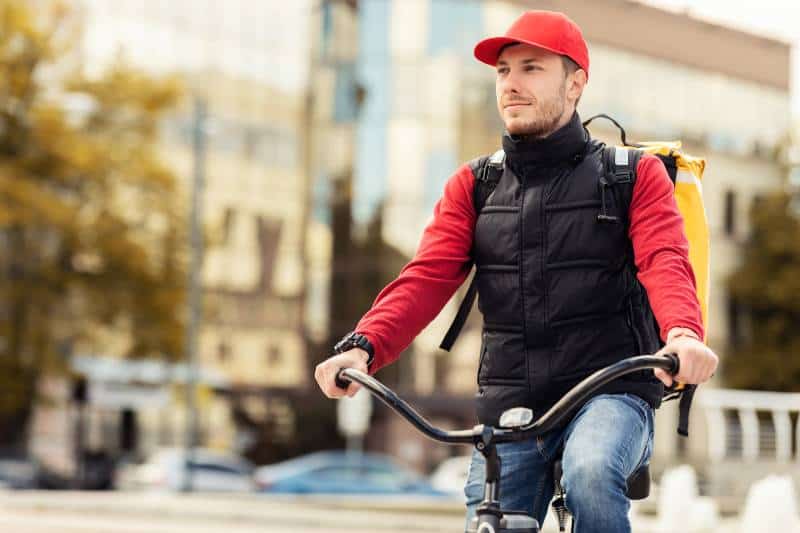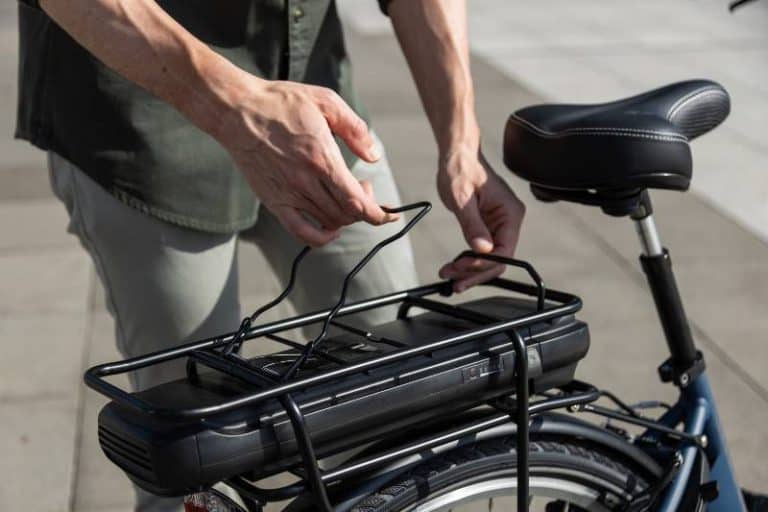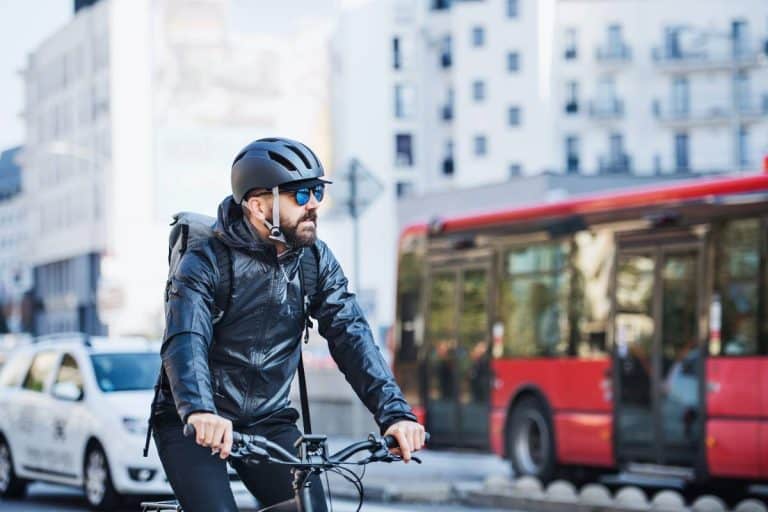Greener Deliveries: The Pros and Cons of Electric Bikes for Delivery Workers
Are you considering electric bikes as a way to make deliveries easier for your workers? If so, you’re not alone! Electric bikes are becoming more popular among delivery workers who need an extra boost when carrying heavier loads. The electric motor and battery can help speed up journeys while still providing the same freedom of movement that regular bicycles offer. However, there are some potential drawbacks to using electric bikes for delivery workers that must be taken into account before committing to such a purchase.
In this blog post, we’ll look at all of the pros and cons associated with using e-bikes for deliveries and provide insight into how choosing one over another type of bike can influence overall operational efficiency.
Ligia Guallpa, director of the Workers Justice Project, an advocacy group, states that around 80% of delivery workers use e-bikes and electric scooters. This increased reliance on e-bikes is due to the pressure on delivery workers to cover larger areas and make faster deliveries.
Key Takeaways
- Electric bikes can offer numerous benefits for delivery workers, including increased efficiency, cost-effectiveness, and positive environmental impact.
- Despite the advantages, electric bikes have their drawbacks like initial costs, limited range, weather limitations, and potential legal issues.
- As the delivery sector evolves, a balanced perspective is crucial when considering the shift to electric bikes, weighing both their strengths and weaknesses.

What Are Electric Bikes?
Electric bikes, also known as e-bikes, are bicycles that are equipped with an electric motor that can be used to assist the rider’s pedal power. Essentially, they are a hybrid between traditional bicycles and motorcycles, offering a blend of human and electric power. E-bikes are growing in popularity around the globe due to their increased efficiency, ease of use, and environmental friendliness compared to traditional motor vehicles.
The most fundamental component of an electric bike is its motor, which comes into play when the rider starts pedaling. The motor is powered by a rechargeable battery, typically lithium-ion, which can last anywhere from 20 miles to 50 miles on a single charge, depending on the bike, the terrain, and the rider’s weight. The power of the motor usually ranges between 250 to 750 watts. Once the rider begins pedaling, the motor kicks in and supplies additional power to the ride, making it easier to ascend hills, combat headwinds, or maintain a steady speed over long distances.
Electric bikes come with different operational modes, such as pedal-assist, throttle-based, or a combination of both. The pedal-assist mode also referred to as pedelec, requires the rider to pedal, wherein the motor provides a boost to the pedaling action, making it feel as if the rider is being pushed along. This system often includes multiple levels of assistance that the rider can adjust according to their needs or desired exertion level.
Throttle-based e-bikes, on the other hand, work more like a motorcycle: when the throttle is engaged, the motor propels the bike forward with no pedaling required from the rider. This can be particularly useful for starting from a stop or when an extra boost is needed.
Now, let’s delve into the various types of electric bikes. The four main types are city or urban e-bikes, cargo e-bikes, folding e-bikes, and mountain e-bikes.
City or Urban E-Bikes: These are designed for commuting and general-purpose riding in urban areas. They are typically equipped with features like fenders to guard against splash-back from wet roads, chain guards to protect clothing from oil on the chain, and racks for carrying items.
Cargo E-Bikes: Cargo e-bikes are built with a reinforced frame and larger carrying capacity, making them ideal for transporting goods. Some models even offer a front or rear platform, basket, or specially designed shape for carrying specific types of cargo. Imagine heading to the grocery store and being able to comfortably haul all of your bags back home on your bike, that’s the convenience a cargo e-bike can provide.
Folding E-Bikes: These are designed for ultimate portability. They can be compactly folded up and carried onto a train or stored in the trunk of a car, making them perfect for multi-modal commutes or for those with limited storage space. Despite their smaller size, they typically offer the same electric assist as larger models.
Mountain E-Bikes: Mountain e-bikes, or e-MTBs like RAD power bikes (one of the best electric bikes you can get!), are equipped with components (like robust frames and wider, knobbier tires) designed for off-road trails. The motor assistance can help riders climb steep and rugged terrain that might be challenging on a traditional mountain bike.
Electric bikes offer a versatile and efficient mode of transportation that combines the benefits of traditional cycling with the convenience of motor-assisted power. They provide a green alternative to conventional motor vehicles and can cater to a variety of user needs, from urban commuting to cargo hauling, recreational trail riding to space-saving travel. With the range of options available today, there’s likely an electric bike out there to suit almost anyone’s needs.
Also, feel free to read an article here that I wrote about Discover the Best Electric Bikes for Your Daily Ride. You’ll find detailed insights on various top-rated electric bikes and how they can elevate your commuting experience.
The Pros of Using Electric Bikes for Delivery
Using electric bikes for delivery comes with a myriad of benefits, from their positive environmental impact and cost-effectiveness to their potential for boosting efficiency, productivity, and health. Let’s delve into each of these advantages in more detail.
Environment-Friendly: E-bikes produce zero tailpipe emissions, making them a significantly greener option than cars or motorcycles. They run on electric power, so they don’t emit CO2 or other harmful greenhouse gases. Moreover, since e-bikes require less energy compared to motor vehicles, the environmental footprint for their manufacturing and usage combined is significantly smaller.
For example, a food delivery business swapping out a fleet of delivery cars for an electric delivery bike could reduce its carbon footprint substantially. This environmental friendliness is not only good for our planet but can also enhance the delivery companies’ image in the eyes of increasingly eco-conscious consumers.
Cost-Effective: Electric bikes are also more cost-effective than their gasoline-powered counterparts in the long run. They have fewer mechanical components that can break down, leading to potentially lower maintenance costs. Additionally, the cost of electricity to charge an e-bike is substantially less than the cost of fuel for traditional motor vehicles.
This translates to significant savings over time, particularly for delivery services that clock up high mileage daily. A courier business, for instance, could substantially reduce its operational costs by investing in a fleet of e-bikes.
Increased Efficiency and Productivity: In densely populated urban environments, electric bikes can often outperform cars in terms of speed and efficiency. They can bypass traffic congestion, take advantage of bike lanes, and are generally easier to park. This can lead to quicker delivery times, increasing the overall efficiency and productivity of delivery service.
Let’s say a courier in a bustling city center switches from a car to an e-bike. They might find that they’re able to complete deliveries more quickly, avoiding traffic jams and easily navigating through narrow streets.
Health Benefits: Finally, using electric bikes for delivery comes with substantial health benefits. While the electric motor assists the rider, there’s still an element of physical activity involved, which contributes to the rider’s overall fitness and cardiovascular health.
This is in stark contrast to the sedentary nature of driving a car or riding a motorbike. A delivery rider, for example, can get a good amount of exercise during their daily rounds, leading to improved fitness and potentially lower healthcare costs in the long run.
The use of electric bikes for delivery presents a compelling case. They offer a greener, more cost-effective, and more efficient solution that also contributes to improved health. As we move towards a more sustainable and health-conscious future, e-bikes stand as an innovative and practical solution in the field of delivery services.
The Cons of Using Electric Bikes for Delivery
While the benefits of using electric bikes for delivery are numerous, it’s important to also consider potential drawbacks that might be associated with their use. These can include the initial cost and maintenance, limited range and battery life, weather limitations, and potential legal and regulatory challenges. Let’s delve into each of these points to provide a balanced perspective.
Initial Cost and Maintenance: Electric bikes tend to have a higher initial cost compared to traditional bikes due to their more complex components, such as the motor and battery. Additionally, while e-bikes generally have lower ongoing costs than gas-powered vehicles, they can still incur maintenance expenses that can be higher than those for regular bicycles.
For example, replacing a worn-out battery or a malfunctioning motor can be expensive. For a small delivery business, these costs may pose a financial hurdle. However, it’s worth noting that these upfront expenses could be offset over time by savings on fuel and other operational costs.
Limited Range and Battery Life: While advancements in technology are improving the range of electric bikes, they are still limited by their battery life. This typically ranges from 20 to 50 miles per charge, depending on various factors such as the weight of the load, the terrain, and the level of pedal assist used. For delivery services covering extensive areas or operating for long hours, this could require multiple recharges throughout the day, potentially disrupting operations.
To illustrate, a delivery service operating across a large city might need to schedule regular stops to recharge or swap out batteries, which could affect delivery times.
Weather Limitations: Electric bikes can be affected by adverse weather conditions. Heavy rain, snow, or extreme temperatures can impact the performance and lifespan of the e-bike’s components, particularly the battery.
Furthermore, riding in poor weather conditions might be more challenging and less comfortable for the rider. For instance, a delivery rider on an e-bike might find it difficult to operate effectively during a heavy downpour or on particularly cold days.
Legal and Regulatory Challenges: In some jurisdictions, the use of electric bikes is subject to certain regulations. These can include restrictions on where they can be ridden (such as whether they are allowed on bike paths), how fast they can go, and the requirement of a license or insurance. Compliance with these regulations could pose a challenge for delivery services using e-bikes.
For example, a city might have a speed limit for e-bikes or might require them to be registered, adding to the operational complexity of a delivery business.
While electric bikes have great potential as a delivery vehicle, there are several factors that need to be carefully considered. Initial and ongoing costs, range limitations, weather impacts, and legal requirements all need to be factored into a decision to switch to e-bikes for delivery. Despite these challenges, many businesses find that with careful planning and management, the benefits of e-bikes can still outweigh the downsides.
Case Studies
Certainly, let’s explore some real-world examples of delivery services using electric bikes. These case studies provide insightful glimpses into the practical implementation and potential benefits of e-bike deliveries.
- DPD in the UK: In response to growing concerns about air quality and congestion in urban areas, DPD, a leading international parcel delivery service, launched an all-electric, emission-free delivery program in several UK cities. The program involved the use of electric bikes and trikes and helped DPD significantly reduce its carbon footprint while still meeting its delivery deadlines. In London alone, DPD’s all-electric depot was expected to take 150 diesel vans off the road each day.
- Amazon in New York: Amazon has been exploring a variety of green delivery options and one of its initiatives involved using electric bikes for package delivery in New York City. The pilot project, dubbed “Amazon Prime Now,” aimed to deliver packages more quickly and efficiently by dodging the city’s notorious traffic. The e-bikes allowed the couriers to move seamlessly through congested streets, proving to be a win for efficiency and eco-friendliness.
- Domino’s Pizza in the Netherlands: Domino’s Pizza in the Netherlands uses electric bikes for pizza delivery in various Dutch cities. The initiative not only reduced their carbon emissions but also improved delivery times. The e-bikes were found to be especially effective in historic city centers with narrow streets where cars cannot easily maneuver.
- UPS in various cities: Global logistics company UPS has tested delivery by electric bikes in various cities worldwide, including Pittsburgh (USA), Dublin (Ireland), and Rome (Italy). The move was part of the company’s broader sustainability strategy. In many cases, UPS uses specially designed electric cargo bikes that can carry a large number of parcels.
- Foodora in Toronto: Foodora, a food delivery service, introduced e-bikes in Toronto to provide a greener and more efficient delivery option. The move was in response to the city’s goal of reducing greenhouse gas emissions. The e-bikes allowed Foodora to make quicker deliveries during rush hour when cars would be stuck in traffic.
These case studies demonstrate how businesses are harnessing the power of electric bikes to improve their delivery services. They offer insights into the potential for increased efficiency, cost-effectiveness, and environmental stewardship that e-bike deliveries can bring to the table. These are compelling examples of how innovative thinking combined with the right technology can contribute to greener and more efficient urban logistics.
The Future of Delivery: A World On Electric Bikes?
The shift towards electric bikes for deliveries has the potential to bring about significant long-term implications for the transport and logistics sector, cities, and society as a whole. Here are some of the potential changes we might see in the future if this trend continues to gain momentum:
- Transformation of Urban Logistics: As urban areas continue to grapple with issues like congestion and pollution, the use of e-bikes could help alleviate these problems by reducing the number of gas-powered vehicles on the road. This could potentially transform urban logistics, leading to quieter, cleaner, and more efficient city centers.
- Infrastructure Development: A surge in e-bike usage could spur the development of more bike-friendly infrastructure, such as dedicated bike lanes and bike parking facilities. Cities might need to redesign their transportation infrastructure to accommodate this shift, making urban environments more friendly not just for e-bikes, but for traditional cyclists and pedestrians as well.
- Green Economy Growth: The increased use of e-bikes could stimulate the growth of the green economy. This could include not just the manufacture of e-bikes and their components, but also related industries like renewable energy (for charging the bikes) and recycling (for old bike batteries).
- Health and Wellness Improvement: If delivery workers switch from cars to e-bikes, we could see health benefits at a societal level due to increased physical activity. This could potentially lead to a decrease in healthcare costs and an increase in overall public health and wellness.
- Policy and Regulation Changes: As e-bike usage grows, policy and regulation changes would likely follow. Policymakers would need to address issues such as where e-bikes can be ridden, how fast they can go, and what safety equipment is required. This could lead to clearer and more comprehensive legislation for e-bikes.
- Increased Accessibility and Equity: As e-bikes become more popular and affordable, they could become an accessible mode of transport for a wider range of people, including those who might not be able to afford a car or who are unable to drive. This could increase transportation equity and independence.
While the shift towards electric bikes for deliveries is not without its challenges, the potential benefits suggest a promising future. As technology advances, and as society continues to prioritize sustainability, health, and efficiency, it seems likely that the use of e-bikes in delivery and beyond will continue to grow. The future of delivery could indeed be a world of electric bikes.

The Pros and Cons of Electric Bikes for Delivery Workers FAQs
How does the use of electric bikes impact the environment?
The use of electric bikes for deliveries allows businesses to reduce their carbon emissions and minimize their environmental impact. Electric bikes are powered by batteries, which do not emit any pollutants or greenhouse gases. This makes them a much greener option than traditional gas-powered vehicles.
What are the health benefits of using electric bikes for delivery?
Using electric bikes for deliveries can provide a number of health benefits, both for the individual delivery workers and society as a whole. The physical activity of riding an e-bike can lead to improved fitness levels and potentially lower healthcare costs. In addition, the elimination of gas-powered vehicles could lead to better air quality in urban areas, benefiting everyone’s health.
Are there legal or regulatory challenges to using electric bikes for delivery?
The use of electric bikes for deliveries is subject to existing laws and regulations. In some areas, these may include restrictions on where they can be used, speed limits, helmet requirements, safety gear, and other standards. It is important for businesses to understand the legal requirements in their area and ensure that their delivery staff comply with them.
What are the limitations of electric bikes in different weather conditions?
Electric bikes are generally designed for use in relatively mild weather conditions. They may not be suitable for extreme temperatures or other challenging environments, such as icy roads. Delivery workers should consider the conditions in their local area and make sure they have the necessary safety equipment to prevent accidents and injuries.
What are the battery life and range of electric bikes?
The battery life and range of electric bikes vary depending on the specific model. Most models are designed to provide a range of up to 50 miles per charge, while some high-end models can offer up to 80 miles. It is important for delivery workers to familiarize themselves with their bike’s specifications and charge them regularly in order to maximize their range and performance.
Conclusion
All in all, electric bikes are an amazing form of technology that can offer delivery workers a number of benefits for their job. Although there are a few downsides to opting for electric bikes, the advantages work in favor of most occupations and provide great value. It’s important for those entering the job or considering investing to understand the legal aspects surrounding electric bike use and be aware of what weather conditions may limit its functionality. With awareness and the right infrastructure and resources, electric bikes could revolutionize the delivery work industry in amazing ways.
We hope this blog post gave you insight into some of these potential pointers and possibilities so that you can make an informed decision when it comes to choosing between different forms of transportation for deliveries. Lastly, we invite you to sign up for our newsletter to stay up-to-date on the latest and greatest developments in the world of electric bikes!






